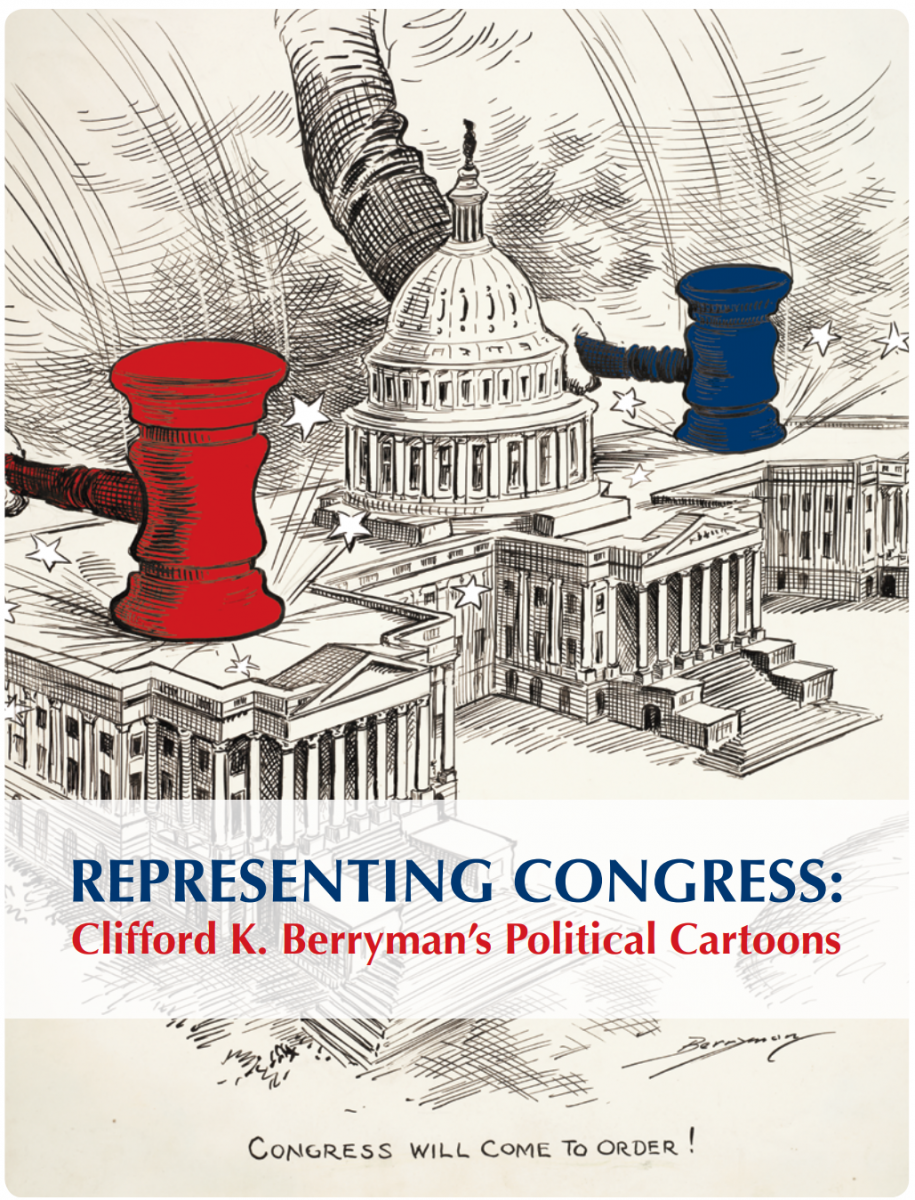
Reviewing the Constitution’s Big Ideas with Primary Sources
Summary
Students analyze clauses from the Constitution of the United States and analyze political cartoons to reinforce their understanding of the major principles of government embodied in the Constitution.
Rationale
Students develop an understanding of the major ideas embodied in the U.S. Constitution by studying how they are manifest in the language of the Constitution and reflected in political cartoons.
Guiding Question
What are the major principles of government embodied in the U.S. Constitution?
Materials
Representing Congress: Clifford K. Berryman's Political Cartoons eBook
Graphic Organizers
Primary Source Sheets
Reflection Questions
Featured Document
Representing Congress is an eBook which presents a selection of political cartoons and learning resources to engage students in a discussion of what Congress is, how it works, and what it does.
Recommended Grade Levels
Grades 7 - 12
Courses
Civics
Topics
The constitutional principles of checks and balances, federalism, limited government, popular sovereignty, republicanism, and separation of powers. .
Vocabulary
Checks and Balances: The Constitutionally granted power for one branch of government to block action by an equal branch of government. The Constitution specifies instances in which one of the three branches can stop action by another. Historical precedents have established others.
Federalism: A system of constitutional government in which power is divided into layers with several states on one level and an overarching federal government on another with authority balanced between the state and federal governments.
Limited Government: The government has only the powers granted to it in the Constitution, and it can only conduct actions permitted by the Constitution.
Popular Sovereignty: The Preamble to the Constitution is an introduction to the type of government the Founders were creating. Its opening phrase stresses that this government is made by the people and exists to represent, protect, and serve them.
Republicanism: A system of government in the United States based in the concept of popular sovereignty and put into practice by the constitutional institutions and processes of representative government.
Separation of Powers: The Constitution keeps the three branches of government (executive, legislative, and judicial) separate. The powers and responsibilities of each is described in a separate Article. Separation makes each Branch the equal of the others.
Time Required
1 forty-five minute class period
Learning Activities
Preparing the Materials
- Print each student a copy of the Graphic Organizers (A and B) and the Reflection Question Worksheet.
- Make one additional copy of the Graphic Organizers to provide one page for each station.
- Establish Primary Source Set stations A and B: A for text and B for cartoons. Make one copy of the Primary Source Sheets for each set of stations, and cut along the dotted lines of each sheet. Keep each set of materials (clause or cartoon; constitutional concept; and description) together with a paperclip.
- Place a copy of one Graphic Organizer and the related cut-outs at each station. Mix up the clauses or cartoons, constitutional concepts, and descriptions at the station so that students must match the ideas together.
Classroom Activity
- Distribute to each student a copy of the Graphic Organizers (A and B) and the Reflection Question Worksheet.
- Divide the students into groups of 4 to carousel through stations A and B.
- Provide each group with enough time at each station for students to collaborate and record on their individual Graphic Organizers:
- Match each constitutional clause or political cartoon to the description and summarize the text on the Graphic Organizer.
- Match the appropriate constitutional concept to the constitutional clause or political cartoon (the description will help provide scaffolded support) and write the appropriate constitutional clause on the Graphic Organizer.
- Explain how the constitutional clause or political cartoon matches the constitutional concept on the Graphic Organizer.
Reflection Activity
- When the students have completed their work at both stations, instruct each student to complete the Reflection Questions Worksheet and prepare to share their responses with the full class.
- Have a whole group discussion of the Reflection Questions.
Additional Resources
Teaching Six Big Ideas in the Constitution - Students engage in a study of the U.S. Constitution and the significance of six big ideas contained in it: limited government; republicanism; checks and balances; federalism; separation of powers; and popular sovereignty.
Constitution Scavenger Hunt with Political Cartoons - Students analyze political cartoons to learn about the outline and structure of the Constitution, as well as the content of many of its clauses.
Studying the Constitution using Primary Sources - Students use primary sources to analyze the plan for the structure and powers of government embodied in the Constitution.
If you have problems viewing this page, please contact legislative.archives@nara.gov.
PDF files require the free Adobe Reader.
More information on Adobe Acrobat PDF files is available on our Accessibility page.